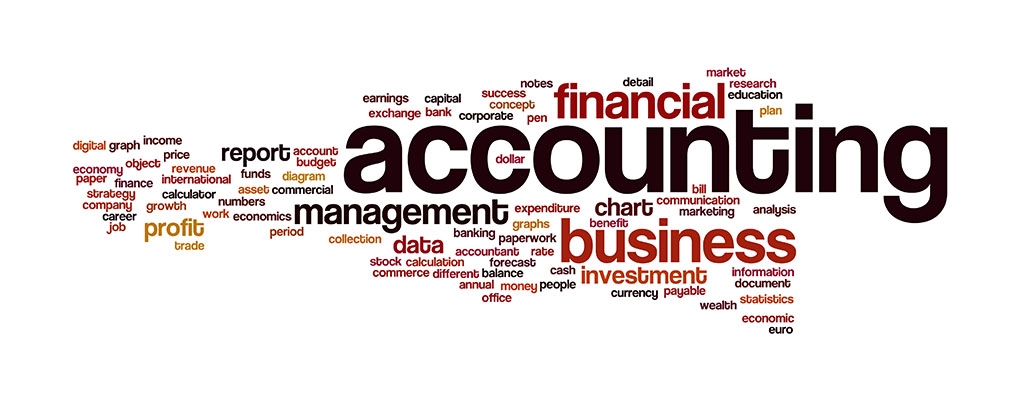A TIE ratio of 2.5 is considered the dividing line between fiscally fit and not-so-safe investments. Lenders make these decisions on a case-by-case basis, contingent on their standard practices, the size of the loan, and a candidate interview, among other things. But the times interest earned ratio formula is an excellent metric to determine how well you can survive as a business. Earn more money and pay your debts before they bankrupt you, or reconsider your business model.
Significance of the TIE Ratio in Financial Analysis
With our times interest earned ratio calculator, we strive to assist you in evaluating a company’s ability to meet its interest obligations. For further insights, you might want to explore our debt service coverage ratio calculator and interest coverage ratio calculator. With that tie ratio said, it’s easy to rack up debt from different sources without a realistic plan to pay them off. If you find yourself with a low times interest earned ratio, it should be more alarming than upsetting. Even if it stings at first, securing a strategy to earn more sales revenue and work hard to maintain a positive net cash flow can salvage your interest payments and put you in a position to curb outstanding debts. Using multiple financial metrics will give a holistic overview of the company’s performance, profitability, efficiency, and solvency, which allows management, investors, and analysts to make well-informed decisions.
Learn more about how to prep yourself for an SBA loan that can help grow your business and have cash reserves so that you can build better product experiences. Here, Company A is depicting an upside scenario where the operating profit is increasing while interest expense remains constant (i.e. straight-lined) throughout the projection period. While there aren’t necessarily strict parameters that apply to all companies, a TIE ratio above 2.0x is considered to be the minimum acceptable range, with 3.0x+ being preferred. Boost your confidence and master accounting skills effortlessly with CFI’s expert-led courses!
Definition – What is Time Interest Earned Ratio?
The deli is doing well, making an average of $10,000 a month after expenses and before taxes and interest. You took out a loan of $20,000 last year for new equipment and it’s currently at $15,000 with an annual interest rate of 5 percent. You have a company credit card for random necessities, with a current balance of $5,000 and an annual interest rate of 15 percent. Businesses use the times interest earned ratio, in conjunction with other financial evaluation tools, as part of a comprehensive means to assess the company’s profitability. To improve its times interest earned ratio, a company can increase earnings, reduce expenses, pay off debt, and refinance current debt at lower rates.
If you have another loan of $5,000 with a 5 percent monthly interest rate, you will owe $250 extra after the interest is processed. If you have three loans generating interest and don’t expect to pay those loans off this month, you must plan to add to your debts based on these different interest rates. A TIE ratio of 5 means you earn enough money to afford 5 times the amount of your current debt interest — and could probably take on a little more debt if necessary. As a general rule of thumb, the higher the times interest earned ratio, the more capable the company is at paying off its interest expense on time (and vice versa).
Calculation Example
This company should take excess earnings and invest them in the business to generate more profit. Companies with consistent earnings can carry a higher level of debt as opposed to companies with more inconsistent earnings. Industry benchmarks should serve as starting points rather than absolute standards when evaluating a specific company’s TIE ratio. Debt can be scary when you’re paying off college loans or deciding whether to use credit to… In a perfect world, companies would use accounting software and diligence to know their position and not consider a hefty new loan or expense they couldn’t safely pay off. But even a genius CEO can be a tad overzealous and watch as compound interest capsizes their boat.
- Using cash basis accounting methods helps analysts and investors accurately evaluate a company’s ability to generate cash to cover its short-term financial obligations.
- Not only does this translate into more money available to repay the principal on its loans, it also means there’s more cash to put toward expanding operations and increasing investor value.
- The EBITDA Coverage Ratio is similar to the TIE ratio but uses Earnings Before Interest, Taxes, Depreciation, and Amortization (EBITDA) instead of EBIT.
- A good ratio indicates that a company can service the interest on its debts using its earnings or has shown the ability to maintain revenues at a consistent level.
- A TIE ratio of 5 means you earn enough money to afford 5 times the amount of your current debt interest — and could probably take on a little more debt if necessary.
The result is a number that shows how many times a company could cover its interest charges with its pretax earnings. The Times Interest Earned ratio serves as an essential tool in financial analysis, providing crucial insights into a company’s debt servicing capability and overall financial health. The times interest earned (TIE) ratio is a calculation measuring a company’s ability to pay off debt obligations, based on the company’s operating income.
How to Calculate the Times Interest Earned Ratio
- This can be interpreted as a high-risk situation since the company would have no financial recourse should revenues drop off, and it could end up defaulting on its debts.
- Shaun Conrad is a Certified Public Accountant and CPA exam expert with a passion for teaching.
- However, as a general rule of thumb, a TIE ratio of 1.5 to 2 is often considered the minimum acceptable margin for assuring creditors that the company can fulfill its interest obligations.
- To have a detailed view of your company’s total interest expense, here are other metrics to consider apart from times interest earned ratio.
- It provides a broader view of a company’s ability to cover its total debt obligations.
Choose CFI for unparalleled industry expertise and hands-on learning that prepares you for real-world success. The information is provided for educational purposes only and does not constitute financial advice or recommendation and should not be considered as such. We note from the above chart that Volvo’s Times Interest Earned has been steadily increasing over the years. It is a good situation due to the company’s increased capacity to pay the interests. We shall add sales and other income and deduct everything else except for interest expenses.
Ultimately, a healthy TIE ratio contributes to a company’s long-term success, enabling it to navigate economic cycles and maintain the confidence of investors and creditors alike. The times interest earned (TIE) ratio is a solvency ratio that determines how well a company can pay the interest on its business debts. It is a measure of a company’s ability to meet its debt obligations based on its current income. The formula for a company’s TIE number is earnings before interest and taxes (EBIT) divided by the total interest payable on bonds and other debt.
Understanding a company’s times interest earned is crucial in evaluating its financial strength. Financial ratios are calculations made by managers, analysts, investors, and creditors, using data from key financial statements and current assets to compare figures and measure a company’s financial health. This ratio indicates how many times a company can cover its interest obligations with its earnings. A higher TIE ratio suggests a stronger ability to meet interest payments, indicating lower financial risk for creditors and investors. The times interest earned (TIE) ratio is a financial metric that measures a company’s ability to fulfill its interest obligations on outstanding debt.
The significance of the interest coverage ratio value will be determined by the amount of risk you’re comfortable with as an investor. This example illustrates that Company W generates more than three times enough earnings to support its debt interest payments. EBIT is used primarily because it gives a more accurate picture of the revenues that are available to fund a company’s interest payments. According to Federal Reserve data, median TIE ratios for public non-financial companies range from approximately 1.59 to 5.78 (25th to 75th percentile), with specific industry averages varying considerably.
The higher the ratio, the better, as it indicates how many times a company could pay off its debt with its earnings. As a result, the interest earned ratio formula is used to evaluate a company’s ability to meet its debt and evaluate the company’s cash flow health. The interest coverage ratio, or times interest earned (TIE) ratio, shows how well a company can pay the interest on its debts. The Debt Service Coverage Ratio (DSCR) goes a step further than the TIE ratio by including both interest and principal payments in the calculation. It provides a broader view of a company’s ability to cover its total debt obligations. The Debt-to-Equity Ratio is a measure of a company’s financial leverage, indicating the proportion of debt used to finance the company’s assets relative to equity.
While the TIE ratio focuses on the company’s ability to cover interest payments, the Debt-to-Equity Ratio provides insights into how much of the company is financed by debt versus shareholder equity. The Times Interest Earned (TIE) ratio, also known as the Interest Coverage Ratio (ICR), is a critical financial solvency metric that measures a company’s ability to pay interest on its outstanding debt. This ratio indicates how many times a company could theoretically pay its periodic interest expenses using its available earnings. In some respects the times interest ratio is considered a solvency ratio because it measures a firm’s ability to make interest and debt service payments. Since these interest payments are usually made on a long-term basis, they are often treated as an ongoing, fixed expense. As with most fixed expenses, if the company can’t make the payments, it could go bankrupt and cease to exist.
Related Terms
Company XYZ’s financial data shows a Net Income before income taxes of $375,000 and Interest Expense of $240,000. Here’s a breakdown of this company’s current interest expense, based on its varied debts. Dill’s founders are still paying off the startup loan they took at opening, which was $1,000,000. The founders each have “company credit cards” they use to furnish their houses and take vacations. The total balance on those credit cards is $50,000 with an annual interest rate of 20 percent. If you have a $10,000 line of credit with a 10 percent monthly interest rate, your current expected interest will be $1,000 this month.
Your company’s earnings before interest and taxes (EBIT) are pretty much what they sound like. This number measures your revenue, taking all expenses and profits into account, before subtracting what you expect to pay in taxes and interest on your debts. Whether it’s the way the industry operates, economic recessions, technological advances, or changes in consumer trends, these outside issues need to be considered when analyzing a company’s finances.
The times interest earned ratio is calculated using EBIT and interest expense data from the income statement to determine business solvency, making the income statement an important document for creditors and investors. A higher times interest earned ratio indicates a company has more than enough income to pay its interest expense, reducing the risk of default and reflecting its creditworthiness. It also indicates the company’s ability to generate consistent earnings and its overall financial stability. A lower TIE ratio, on the other hand, shows a higher risk of financial distress or default.
















